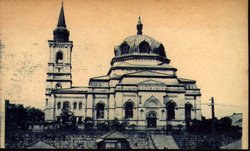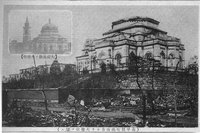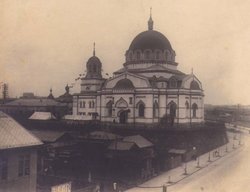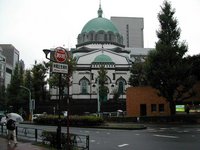Holy Resurrection Cathedral (Tokyo, Japan)
| This article forms part of the series Orthodoxy in Japan | |

| |
| History | |
| Timeline of Orthodoxy in Japan Church of Japan | |
| Saints | |
| Nicholas of Japan Andronik of Perm | |
| Bishops | |
| Sergius (Tikhomirov) Nicholas (Ono) Benjamin (Basalyga) Ireney (Bekish) Nikon (de Greve) Vladimir (Nagosky) Theodosius (Nagashima) Seraphim (Sigrist) of Sendai Daniel (Nushiro) of Japan Seraphim (Tsujie) of Sendai | |
| People | |
| Fr Paul Sawabe Fr Simeon Michiro Mii Fr Anatoly Tikhai Yakov Tikhai Victor Pokrovsky Irina Yamashita | |
| Institutions | |
| Holy Resurrection Cathedral | |
| Edit this box | |
The Holy Resurrection Cathedral, commonly called Nikolai-do, in Surugadai, Kanda district, Tokyo, Japan is the main cathedral of the Japanese Orthodox Church. It is located on Surugadai knoll in Kanda, on property purchased in 1872 by the future Archbishop Nicholas (Kasatkin), now St. Nicholas of Japan, for his mission headquarters to preach Orthodox Christianity to the Japanese people. Construction of the cathedral began in 1884, to plans prepared by Michael A. Shchurupov, a Moscow architect. It took seven years for the Japanese artisans to complete the edifice, which followed the classic Byzantine church design. The cathedral was consecrated on March 8, 1891.
The original cathedral was seriously damaged in the Great Kanto Earthquake of September 1923. The earthquake caused the main bell tower to fall onto the central dome, collapsing it, and thus causing major damage to the building. Fire further damaged and destroyed the iconostasis and the interior of the building. Rebuilding the cathedral became a major task for the then ruling bishop, Archbishop Sergii (Tikhomirov), who succeeded St. Nicholas after he died in 1912. Since Russia could no longer be looked to as a source of funding, Archbishop Sergii had to look for funding within Japan. A significant amount of funds was raised by numerous concerts by the cathedral choir, led by Victor A. Pokrovsky. The re-built cathedral was re-consecrated on December 15, 1929, with a shorter bell tower, a modified dome that was more in keeping with Archbishop Nicholas' original desires, and a less ornate interior. The re-built cathedral was designed by the Japanese architect, Shinito Okada.
Holy Resurrection Cathedral is known more popularly as Nikolai-do (Nicorai-do, as pronounced in Japanese), meaning The Temple (or House) of Nicholas, which reflects his popularity in Japan. In the world before the 1960s Nikolai-do was a prominent building that overlooked the Imperial palace, but now it is hidden among the many tall buildings erected since the 1960s.



